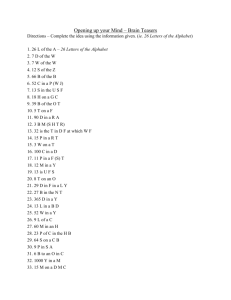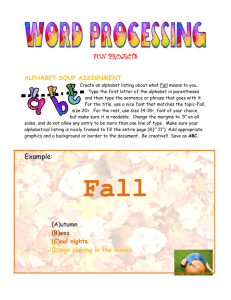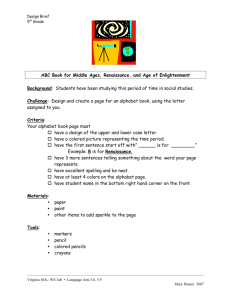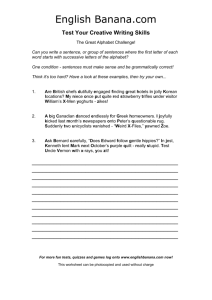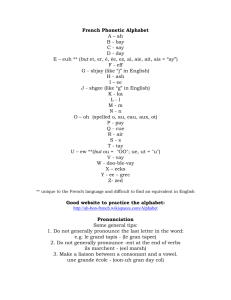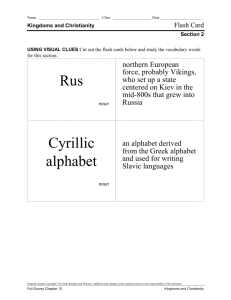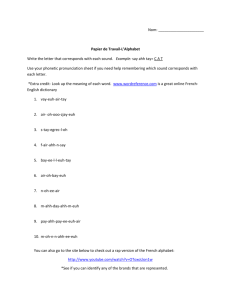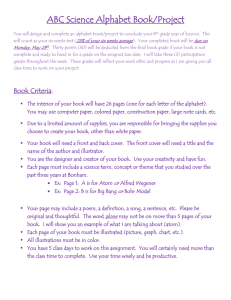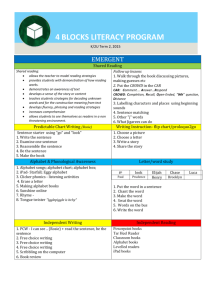Integrated Task RF K.1 d Whole Group, Small Group, Partner or One
advertisement
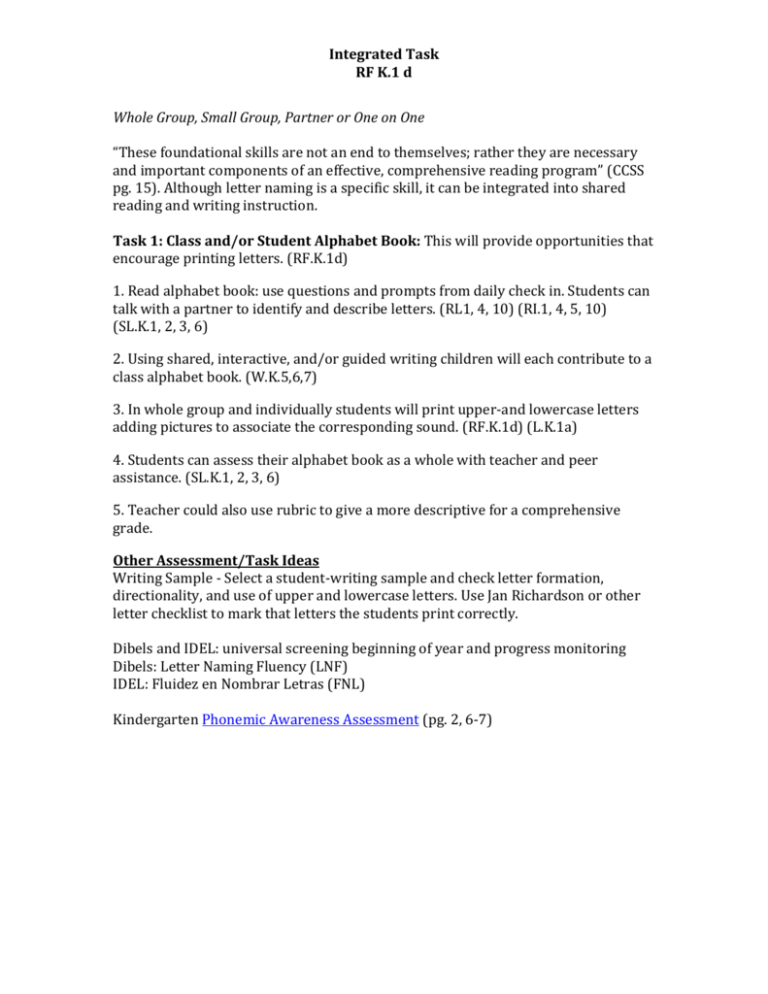
Integrated Task RF K.1 d Whole Group, Small Group, Partner or One on One “These foundational skills are not an end to themselves; rather they are necessary and important components of an effective, comprehensive reading program” (CCSS pg. 15). Although letter naming is a specific skill, it can be integrated into shared reading and writing instruction. Task 1: Class and/or Student Alphabet Book: This will provide opportunities that encourage printing letters. (RF.K.1d) 1. Read alphabet book: use questions and prompts from daily check in. Students can talk with a partner to identify and describe letters. (RL1, 4, 10) (RI.1, 4, 5, 10) (SL.K.1, 2, 3, 6) 2. Using shared, interactive, and/or guided writing children will each contribute to a class alphabet book. (W.K.5,6,7) 3. In whole group and individually students will print upper-and lowercase letters adding pictures to associate the corresponding sound. (RF.K.1d) (L.K.1a) 4. Students can assess their alphabet book as a whole with teacher and peer assistance. (SL.K.1, 2, 3, 6) 5. Teacher could also use rubric to give a more descriptive for a comprehensive grade. Other Assessment/Task Ideas Writing Sample - Select a student-writing sample and check letter formation, directionality, and use of upper and lowercase letters. Use Jan Richardson or other letter checklist to mark that letters the students print correctly. Dibels and IDEL: universal screening beginning of year and progress monitoring Dibels: Letter Naming Fluency (LNF) IDEL: Fluidez en Nombrar Letras (FNL) Kindergarten Phonemic Awareness Assessment (pg. 2, 6-7)



